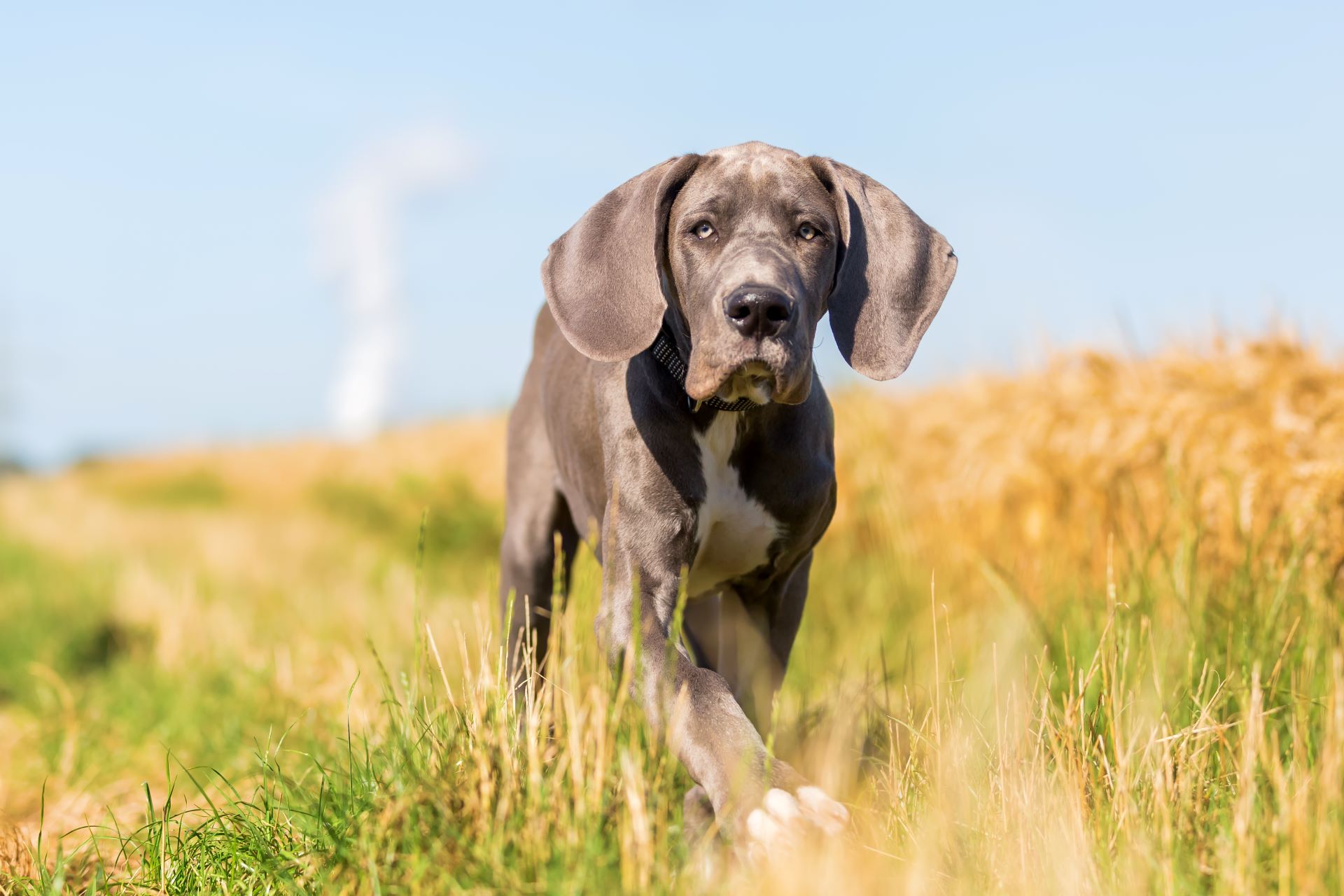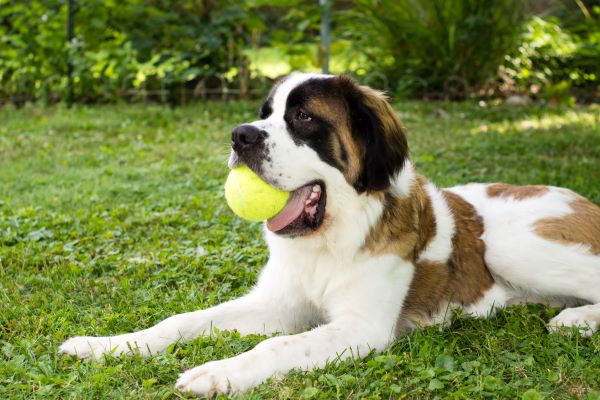
Helping our four-legged family members stay comfortable, mobile, and joyful for as long as possible.
What Is Osteoarthritis in Dogs?
The most common form of arthritis in dogs is osteoarthritis, a degenerative joint disease in which the protective cartilage wears away, leading to pain, stiffness, and reduced range of motion. Once that cartilage is gone (stage 3 of osteoarthritis in dogs), the body can’t replace it—so early intervention is critical to slowing the disease and preserving quality of life.
Why Arthritis in Dogs Deserves Your Attention
- A silent epidemic — Radiographs reveal that up to 40 % of dogs show arthritic changes by just four years old.
- Weight really matters — Dogs only 5 – 8 % overweight are 50 % more likely to develop osteoarthritis by age six. Lean dogs also live, on average, two years longer than their slightly overweight counterparts.
- A heartbreaking outcome — Uncontrolled pain from canine arthritis is a leading cause of humane euthanasia. Controlling joint pain is literally life-saving.
Signs of Arthritis in Dogs
Because dogs hide discomfort, the early signs of arthritis in dogs can be subtle:
| Early/Subtle | Moderate | Advanced |
|---|---|---|
| Slower to rise after naps | Limping after exercise | Constant lameness |
| Hesitating on stairs or into the car | Stiffness after rest | Swollen joints |
| Less enthusiasm for fetch or long walks | Clicking or “crunchy” joints | Loss of muscle mass |
Not sure if the quirks you notice are pain-related? Try these at-home screenings:
Helsinki Chronic Pain Index (HCPI) – PDF (scores 0–11 are normal)
Repeat a survey every 6 – 12 months to help spot subtle changes before obvious lameness appears. If your pet’s score increases, it may indicate an underlying problem such as joint inflammation, and so warrants a recheck with a veterinarian.
Risk Factors of Canine Arthritis You Can Influence
1. Keep Your Dog at a Healthy Weight
Extra weight puts more pressure on your dog’s joints and increases inflammation. Keeping your pup at a healthy weight is one of the best ways to protect their joints and prevent arthritis. Also, in overweight dogs with joint pain, decreasing their weight can significantly improve comfort and decrease inflammation, possibly even removing their need for pain medications!
2. Know Your Dog’s Breed Risks
Some breeds—especially large or giant dogs, or those with hip or elbow problems—are more likely to develop arthritis. If your dog has a breed-related risk, staying proactive is key. Your veterinarian may even recommend joint supportive neutroceuticals earlier in life for these breeds.
High-Risk Breeds for Arthritis in Dogs:
- Labrador Retrievers
- Golden Retrievers
- German Shepherd Dogs
- Rottweilers
- Bernese Mountain Dogs
- Great Danes & other giant breeds (e.g., Mastiffs, Newfoundlands)
- Dogs with chondrodysplasia (short rotated legs; i.e. Basset Hounds, dachshunds, chihuahuas)
3. Be Mindful of Past Injuries
Dogs who’ve had injuries like torn ligaments (such as cruciate tears) or broken bones are more likely to develop arthritis in those joints later on.
4. Keep Exercise Consistent and Gentle
Dogs that lie around all week and then play hard on the weekend are at greater risk for joint stress. Daily, gentle exercise—like short walks—is much better for long-term joint health.
Move It to Lose It (Pain, That Is!)
Studies show that light to moderate exercise—about 60 minutes total, five days a week—decreases pain, reduces inflammation, and slows progression of osteoarthritis in dogs. For an older pup, that might be two or three relaxed neighborhood strolls or gentle swimming. Think frequent, low-impact, and fun.

How to Treat Arthritis in Dogs
| Treatment | Why It Helps | Examples |
|---|---|---|
| Weight Management | Less load, less pain | Tailored diet plans, regular weigh-ins |
| Targeted Exercise & Rehab | Builds supportive muscle, lubricates joints | Underwater treadmill, laser therapy, guided home exercises |
| Anti-Inflammatories & Pain Relief | Controls pain and inflammation | Adequan, NSAIDs, Amantadine, gabapentin |
| Joint-Protective Nutraceuticals | Supports cartilage health | Omega-3s, glucosamine, chondroitin, green-lipped mussel |
| Environment Tweaks | Reduces daily strain | Ramps for cars, non-slip rugs, elevated bowls |
| Targeted joint injection therapies | Reduces inflammation and slows arthritis progression | Alphaflo, platelet-rich plasma, polyacrylamide gels (ie Arthramid, Spryng) |
Our rehab veterinarian is trained to give treatments directly into your dog’s sore joints.There are options available that, when given early in the course of disease, can slow progression and maintain function for high activity. When these treatments are given later in the course of disease they can provide relief when regular oral medications aren’t enough.
When to Schedule a Veterinary Evaluation
If your pain-screen score creeps up, your dog is a high-risk breed, or you simply have a hunch something isn’t right, book a visit. We’ll:
- Perform a full orthopedic exam
- Take baseline radiographs to grade existing change
- Design a personalized arthritis-management plan—from diet to rehab
Early care can delay (or prevent) end-stage disease and keep your best friend happy, mobile, and part of every family adventure.
Helpful Resources for Pet Parents
For additional, evidence-based information on canine arthritis, visit Canine Arthritis Management. Some of the resources on this site:
- Nutrition support – i.e., low calorie treats, feeding giant breed puppies
- Exercise support – i.e., using heat or cold therapy, how to warm up and cool down your athlete
- Environmental support – i.e., home modifications, activity modifications for arthritic dog, assistive device options
- Treatment options – i.e., benefit of NSAIDs, joint injections, Librela
Let’s Keep Those Joints Joyful!
If you have concerns about your dog’s mobility, pain level, or genetic risk of arthritis in dogs, contact Harmony Animal Hospital today. Together we can spot osteoarthritis in dogs early, create a comprehensive plan, and give your dog the longest, most comfortable life possible.
Because every wag and wiggle matters.

